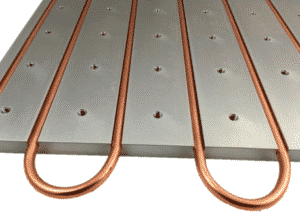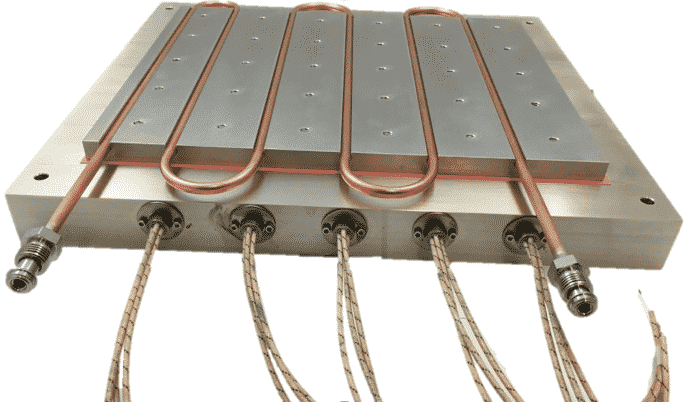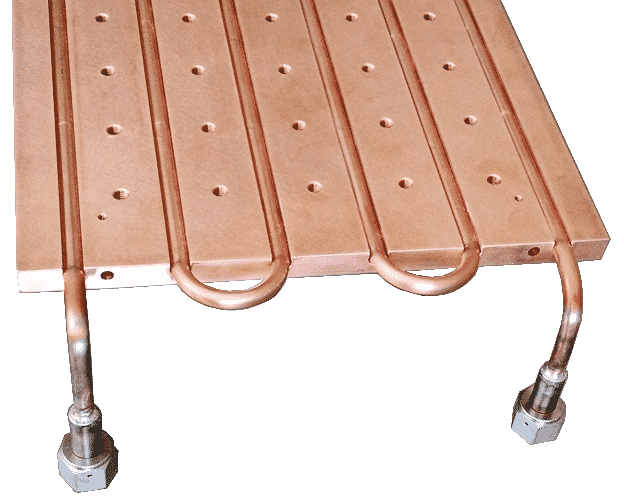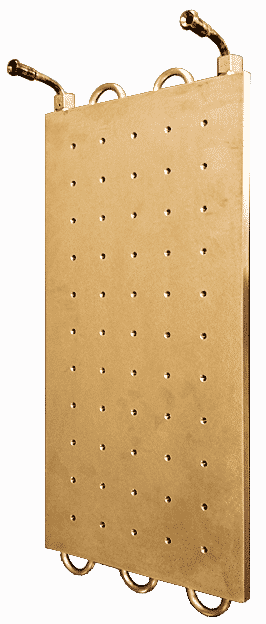Cold-Plate Design, Fabrication, and Testing
A Thermal Control Plate, Thermal Interface Plate, Thermal Sink, or Cold Plate is used for heat sinking at a specified temperature


Many thermal control systems such as air cooling have limitations, requiring enough airflow to remove heat efficiently. But what if the area is so constrained, getting sufficient air is impossible? It’s time to consider different solutions; perhaps a cold plate is the best option.
The use of a cold plate thermal interface can enable precise temperature control for many applications. Your circumstances and conditions will dictate the best answer, which isn’t always apparent. This where TSL comes in. With decades of experience designing custom thermal-control systems and interfaces, our engineers are best suited for identifying the most effective method.
Refrigerant and Cryogenic Cold Plates
With decades of hands-on experience, designing thermal solutions for various industries, TSL engineers can provide tailored solutions to meet your unique requirements. We have designed interfaces for refrigerant and cryogenic cooling and some options include:
- Liquid Nitrogen
- Liquid Methane
- Cryocoolers
- HCFC, HFC, and HC refrigerants
- Thermo-electric coolers (TECs)
- Heat pipes
- Passive straps
What are Your Cold Plate Options?
If you need a cold plate or thermal interface plate to cool or heat a device, TSL can design, fabricate and install one to fit your specific requirements. Some variables we can design to include:
 Material
Material
- Copper
- Aluminum
- AlSiC
- Graphite
Cooling/heating method
- Refrigerant
- Cryogenic liquid or gas
- Thermo-electric (TEC)
- Radiation
- Heat pipe
- Cryocooler
- Electrical or quartz lamp heaters
 Interfaces
Interfaces
- Tube connections
- Attachment features
- Hole pattern (threaded or through)
- Fastener configuration
- Flatness and roughness specs
- Thermal interface materials (TIM)
- Surface finish and coatings (metallization, anodize, etc.)
- Mounts (legs, standoffs, etc.)
- Temperature measurement
- Flow measurement
Other considerations
- Thermal mass
- Pressure rating
- Flowrate vs. pressure drop
- Vacuum retention/outgassing/hermeticity
- Temperature control
- Fabrication method
- Vibration isolation
- Emissivity and absorptivity
- Supported mass
TSL provides the entire thermal control solution
Sometimes wholesale cooling is not what is required. If you need to control the temperature of the thermal interface plate (or the cooled device), then some type of feedback temperature control system is required. We highly recommend a push/pull thermal control approach that uses active heating in addition to the cooling approach. By providing electric heating via resistive or radiative heaters, precise temperature control can be achieved through the use a proportional integral derivative (PID) controller. The thermal control subsystem can be configured for:
Temperature input
- Thermocouple
- RTD
- Thermistor
- Process input (4-20 mA, ± 10V, etc.)
Communications
- Serial (RS-232, RS-485)
- USB
- Ethernet
Using LabVIEW, we can create a custom temperature control program for your system.
Thermal Space, Ltd. can provide you with a simple cold plate or a complete turn-key solution, ready for precision temperature control and use on delivery.

